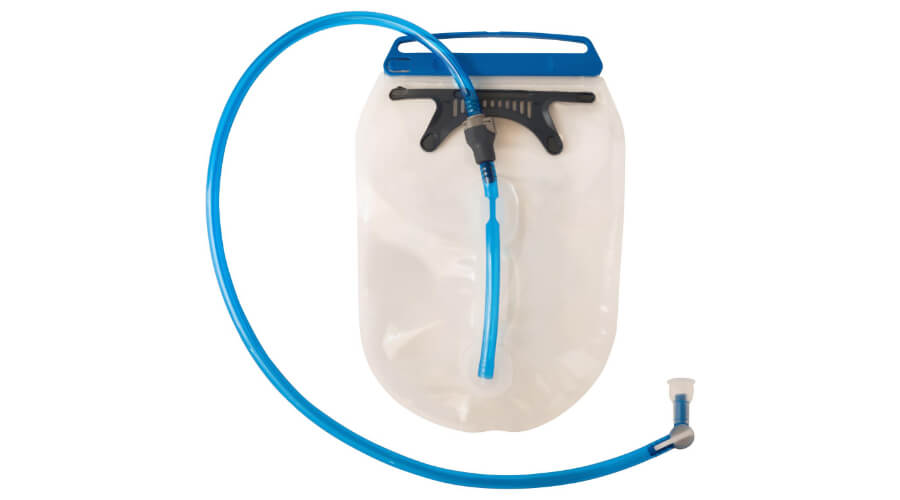Yes, hydration packs are vital running gears that any modern runner must embrace—keeping your body hydrated while running is essential since it boosts your performance. Previously, runners embraced carrying water bottles on their hands, but the emergence of hydration packs stopped the annoying practice of holding the bottle by your hands while running. The packs provide an option to carry water, while your hands are free, and they freely and easily access water when in need.
Who Uses Hydration Packs?

Hydration packs are synonymous with trail runners. Other runners, such as roadrunners, are hesitant to embrace the packs. Reasons they hesitate to acknowledge the use of hydration packs are unknown, but maybe they lack knowledge about their service and importance.
This article delves into the various types of hydration packs and discusses how runners use them. We have also discussed the best 2 hydration packs of 2021. Keep reading to enlighten yourself.
What Are Hydration Packs?
Hydration packs consist of backpacks, vests, or belts containing a water reservoir commonly called the bladder. The bladder comes with a long tube that runs from it, and you can use it for drinking water. Though the bladder comes with the pack in most cases, in rare instances, runners might be forced to acquire one independent of the hydration pack.
Should I Use a Hydration Pack When Running?
Any run that lasts more than 30 minutes requires water to accompany you to hydrate and oil your body. While focusing on the long run, your body needs an intake of 8 ounces of water every 20-30 minutes. However, if you run less than 30 minutes, carrying water with you is unnecessary—the amount of water consumption on the go might fluctuate depending on the prevailing weather conditions.
You may opt to carry a bottle of water on your hands while running, but the practice is a bit outdated and annoying. Besides that, the bottle might cause imbalance and affect your running form.
A logical solution to most runners is the use of hydration packs for their day-to-day runs. Settle for a well-fitted hydration pack that doesn’t bounce around and distracts you while you are running. For instance, the backpack and vest hydration packs are nicely fitted, and the tube passes through the shoulder to afford you quick access to water when necessary.
What Are the Common Types of Hydration Packs?
We have three significant types of hydration packs available on the market today. The three are backpacks, vests, and belts. We have briefly discussed them below to help you understand them better.
- Hydration Backpacks
The hydration backpacks’ appearance is similar to regular backpacks. The only difference is that these backpacks contain a water-holding bladder inside. The backpacks are of varying sizes. The smallest of them all comes with enough space to accommodate the full water bladder and extra space for a few small items. On the other hand, a bigger bladder boasts a roomy space that holds a full water bladder and a lot of running gear. Though some runners might appreciate the bigger model, others view it as a hindrance to their run.
- Hydration Vests
A hydration vest pack consists of wide front panels but features a lower profile at the back. The design of the vests makes them less obtrusive. At times the wide panels might bring discomfort to your body by generating heat, but you may make good use of them by stashing valuable items into their pockets while running.
- Hydration Belts
Hydration belts are also known as waist packs. These packs are suitable for shorter runs since they contain a small bladder containing a small amount of water. The packs are famous for runners who detest vests and backpacks.
Using a Hydration Pack
Even if you have never used a hydration pack, it is a simple gadget to use by anyone. Before embarking on your run, try your pack by adjusting it to achieve a tight fit. It must fit well to eliminate chances of moving about when running.
After achieving the desired fit, fill the bladder with water and ensure the hose runs through your shoulder if you prefer a hydration vest or backpack. The packs come with loops that affix the hose in the right place.
It is easy to dring water while running. You have several options at your disposal. You can either bite on the end, remove a cap, twist the end, or press a switch to access water.
Best Hydration Packs of 2021
- Nathan Hydration Running Vest. https://www.amazon.com/Nathan-Hydration-Running-Included-Drinking/dp/B08YQ37PP1
- CamelBak Repack LR 4 Hydration Pack. https://www.amazon.com/CamelBak-Repack-Hydration-Pack-Black/dp/B075X3FR5V
Nathan Hydration Running Vest
The Nathan Hydration Running Vest boasts a 2-liter water capacity bladder that ensures hydration throughout your run. The vest comes with a bite valve. The elegant vest’s features are as follow:
Adjustable Straps– Thee adjustable chest straps allow the vest to fit different sizes of people. The adjustment of the belt suits your body comfortably.
Smartphone Pocket– The vest has a front zipped pocket suitable for carrying your smartphone and another one used for carrying a bottle of water.
3-Way Harness– The patented 3-way harness help in distributing the liquid weight uniformly to offer a non-bouncing ride when running.
2-Liter Bladder– the bladder supplied with the vest holds a maximum of 2liters of water and features a bite valve.
CamelBak Repack LR 4 Hydration Pack.
The CamelBak is a waist hydration pack that consists of a tube capable of carrying a maximum of 1.5 liters of water to nourish you while running. The features of this waist pack are as follows:
Compression straps- The hydration pack boasts dual reservoir compression straps that cinch the reservoir neatly into the small of your back to offer stability and proper fitting.
1.5 Reservoir– The reservoir provides a steady flow of water to provide better hydration while running.
FAQ
Should I Wear a Hydration Pack While Running a Race?
There are factors worth considering when running a race. While the pack allows you to hydrate yourself whenever the need arises without relying on aid stations, its weight might slow you down and affect your performance.
Conclusion
When properly used, hydration packs are essential in a run. They ensure that your body receives the necessary hydration to keep you going. However, you better rely on aid stations during competitive races as the pack might slow you down.

